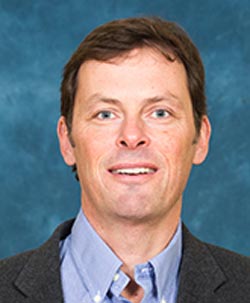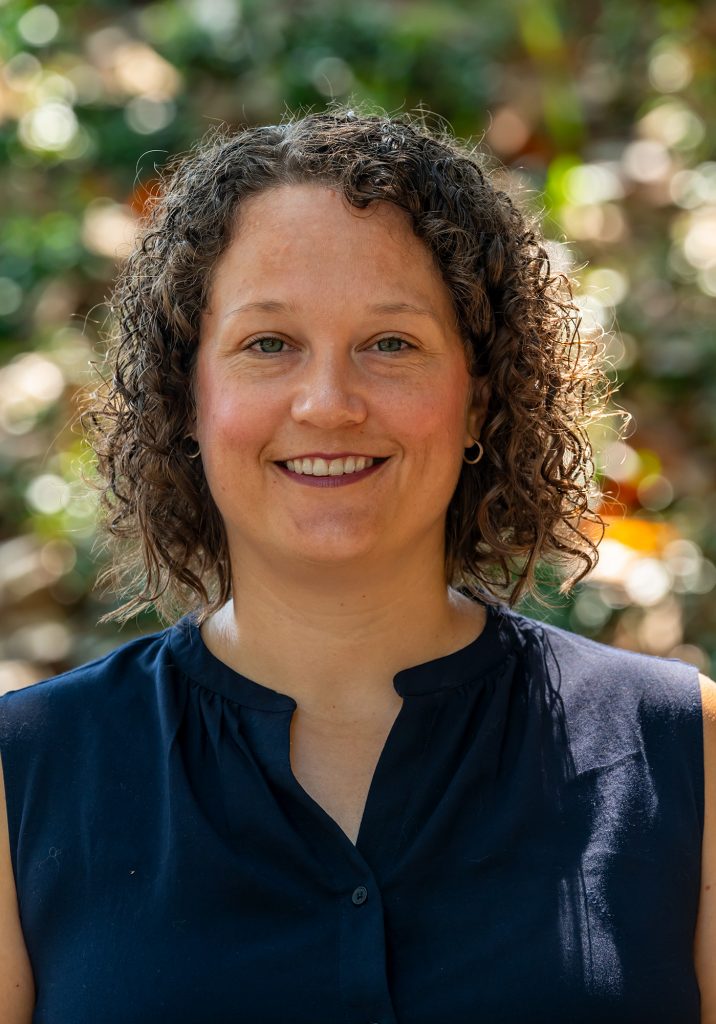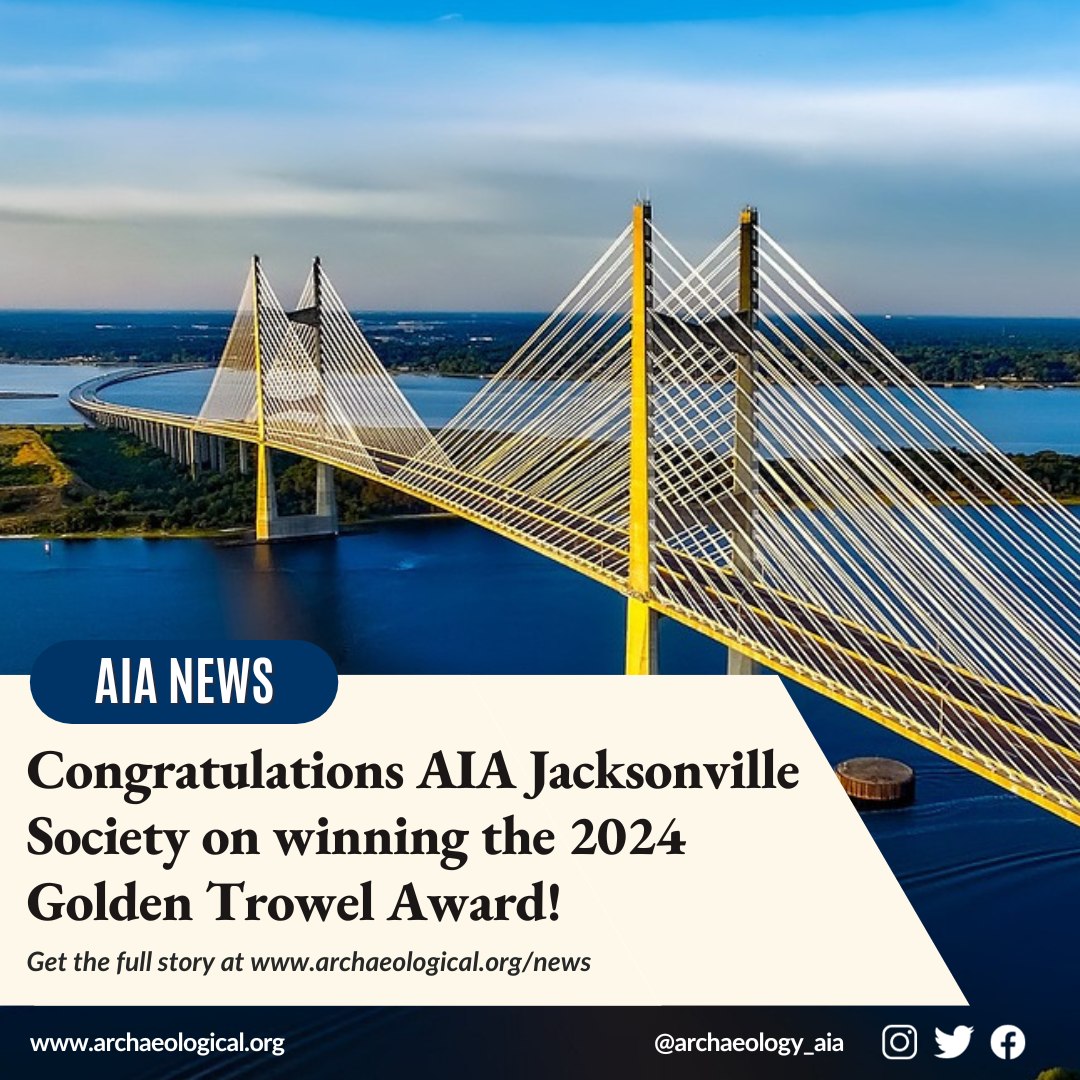The Archaeological Institute of America - Jacksonville Society
The Archaeological Institute of America (AIA) is the world's oldest and largest archaeological organization. The AIA is a nonprofit founded in 1879 and chartered by the United States Congress in 1906. There are more than 100 local societies, like this Jacksonville Society, in the United States, Canada, and overseas. Members include professional archaeologists, students, and enthusiasts, all united by their passion for archaeology and its role in furthering human knowledge.
The AIA promotes archaeological inquiry and public understanding of the material record of the human past to foster an appreciation of diverse cultures and our shared humanity.
The AIA supports archaeologists, their research and its dissemination, and the ethical practice of archaeology.
The AIA educates people of all ages about the significance of archaeological discovery and advocates for the preservation of the world’s archaeological heritage.
Professional archaeologists who are AIA members, have conducted fieldwork worldwide. The Institute has founded research centers and schools in seven countries and maintains close contact with these institutions. AIA Members are dedicated to the greater understanding of archaeology, the protection and preservation of the world's archaeological resources, and the support of archaeological research and publication.
SEASONAL LECTURES
PRESENTATIONS TAKE PLACE AT NOON EST, in Building 51 at the University of North Florida, Jacksonville, (1 UNF Dr, Jacksonville, FL 32224) UNLESS OTHERWISE NOTED. Email [email protected] to find out if Zoom is offered for each lecture. The lectures are free and open to the public. After the lecture, complimentary refreshments may be served in the Physical Anthropology Lab. On Saturdays, parking is free and the staff/faculty/vendor spaces are open to everyone.
2025 MEETINGS & PRESENTATIONS
Dr. Geoff Emberling, the AIA’s Joukowsky Lecturer for 2025
Kush and the Roman World: Warrior Queens along the Nile
Ancient Kush was one of the earliest and longest-lived empires in Africa, rivalled only by Egypt. We think of Kush in terms of its relationship to Egypt of the pharaohs, but in fact Kush remained in power long after the last Egyptian pharaoh and indeed was rival and trade partner of ancient Rome after the Roman conquest of Egypt in 31 BCE. The initial contact with Rome resulted in a series of skirmishes in which the Kushite army was led in battle by a ruling queen or kandaka, who one Roman source described as “a masculine sort of woman who was blind in one eye.” The kandakas were part of a long line of powerful Kushite royal women, and they remain important symbols even in Muslim Sudan. This talk describes the long relationship between Kush and the Roman world, including espionage, conflict, and a long and rich trade and gift exchange.
Dr. Geoff Emberling is an Associate Research Scientist working at the Kelsey Museum of Archaeology, University of Michigan. He holds his degrees from the University of Michigan (Ph.D.) and Harvard University, and his research interests include the ancient Middle East (Mesopotamia) and ancient North Africa (Nubia and Kush), particularly early states, cities, and empires, ethnicity and identity, heritage, and collaborative community archaeology. Since 2012 he has co-directed archaeological projects at El-Kurru and Jebel Barkal in northern Sudan.
Dr. Jessi Halligan from Texas A&M University
Why underwater? The importance of submerged landscape research for understanding Pleistocene peoples in the New World
Perhaps most people think of shipwrecks when underwater archaeology is mentioned, but numerous formerly-terrestrial sites have survived drowning in our freshwater lakes and rivers and on our continental shelves. These sites can even be better preserved than their dry counterparts, and in some cases they can help us answer some of the most pressing questions about people in the past. Thousands of Pleistocene artifacts have been discovered in Florida’s rivers and springs, along with some of the best preserved early sites in the Americas. These sites are challenging archaeological models for the peopling of the Americas and are providing us with information about the lifeways of early Indigenous peoples in the New World.
Dr. Jessi J. Halligan is the Associate Director of the Center, an Associate Professor of Anthropology, and holds the Chair in First American Studies. She arrived at the Center in January 2024 from Florida State University. She specializes in the archaeology of drowned landscapes and the initial peopling of the Americas during the end of the Pleistocene. She currently is directing projects on late Pleistocene and early Holocene archaeological sites in the Aucilla River Basin in northwestern Florida, co-directing a submerged landscape survey in Lake Erie, and co-directing a collaborative project with the Bureau of Ocean and Energy Management to revise the Gulf of Mexico submerged pre-Contact archaeological survey guidelines. She has more than 30 years of professional archaeology experience, having directed projects on the Great Plains, the Midwest, Texas, and the Northeastern US, in addition to her current research in the Gulf region and the Great Lakes.
Dr. Andrea Torvinen,
Collections Manager of the Florida Archaeology and Ceramic Technology Laboratory at the Florida Museum of Natural History/UF
The Role of Collective Action in Community Resilience in Northwest Mexico
Dating to the Epiclassic period (600-900 CE), La Quemada, Zacatecas, Mexico, was founded during the cultural florescence of the northern frontier of Mesoamerica, but the site was abandoned ca. 800-900 CE while neighboring hilltop centers persisted. Having previously ruled out climate change as a contributing factor to the site's decline, this research investigates whether internal social unrest or shifting political or economic networks may have played a role. Specifically, did a change in how the occupants of La Quemada identified with one another decrease the potential for collective action over time? Material proxies in the form of ceramic styles (i.e., decoration or vessel forms) and fabric classes (i.e., petrographic and chemical data) are used to assess the temporal and spatial consistency of social identification at multiple socio-spatial scales within the site of La Quemada. Despite fluctuations, there was a high potential for collective action preceding site abandonment, suggesting that a disruption in the social fabric of La Quemada did not contribute to its decline. Therefore, being cut off from social networks developing between West and Central Mexico likely impacted the long-term resilience of La Quemada.
Andrea is an anthropological archaeologist interested in community resilience and social identity, compositional and technological ceramic analysis, and collective action among middle-range societies. Her primary research areas are West Mexico and the U.S. Southwest but she has also engaged in fieldwork in northern Iceland and west-central Illinois.
Dr. Daniel Pullen from Florida State University
A Late Bronze Age “Naval Station” at Kalamianos (Saronic Gulf), Greece?
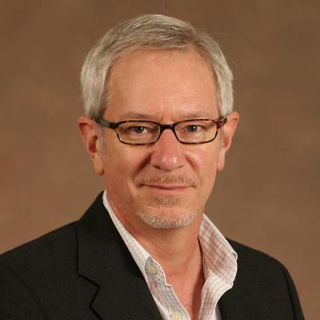 The Saronic Harbors Archaeological Research Project has documented the Late Bronze Age (14th-13th cent. BCE) harbor town at Kalamianos on the Saronic Gulf coast of the Corinthia, Greece. We suggest this site might be the Homeric town of “Eïones” which later Strabo identified as a “naval station.” The implications of this identification of Kalamianos as a naval station are evaluated in light of our current understanding of the archaeology of maritime culture, both commercial and military, of the Mycenaeans and other Late Bronze Age (LBA) peoples of the Aegean. The lack of identifiable maritime infrastructure – let alone that for specialized military activity – outside of Crete, including at Kalamianos, suggests that such installations were not essential for LBA maritime activities elsewhere in the Aegean.
The Saronic Harbors Archaeological Research Project has documented the Late Bronze Age (14th-13th cent. BCE) harbor town at Kalamianos on the Saronic Gulf coast of the Corinthia, Greece. We suggest this site might be the Homeric town of “Eïones” which later Strabo identified as a “naval station.” The implications of this identification of Kalamianos as a naval station are evaluated in light of our current understanding of the archaeology of maritime culture, both commercial and military, of the Mycenaeans and other Late Bronze Age (LBA) peoples of the Aegean. The lack of identifiable maritime infrastructure – let alone that for specialized military activity – outside of Crete, including at Kalamianos, suggests that such installations were not essential for LBA maritime activities elsewhere in the Aegean.
Professor Pullen is an archaeologist with training in Anthropology and Classical Archaeology, working in the prehistoric Aegean region, especially the later Neolithic–Early Bronze Age and the Mycenaean/Late Bronze Age. His research interests lie in the emergence of complex societies (the state and political economy) as seen through changes in regional settlement patterns, monumental architecture, and political economy and administration; landscape archaeology; the interaction of coastal settlements with maritime and landbound areas; and agriculture in ancient societies. His current research projects include the Late Bronze Age (Mycenaean) harbor settlement at Kalamianos on the Saronic Gulf of southern Greece; the Final Neolithic period at Alepotrypa Cave in the Mani of southern Greece; and the Early Bronze Age in western Anatolia, especially around the ancient city of Sardis. His major publications include the co-authored Artifact and Assemblage: The Finds from the Southern Argolid Survey (Stanford 1995), The Early Bronze Age Village on Tsoungiza Hill (Nemea Valley Archaeological Project I) (American School of Classical Studies at Athens 2011), the edited volume Political Economies of the Aegean Bronze Age (Oxbow 2010) from one of the department's Langford conferences, and most recently the co-edited book Neolithic Alepotrypa Cave in the Mani, Greece (Oxbow 2018).
MAKE A DONATION
A donation of any amount helps us with speaker presentations. Just click the secure “DONATE” button below to use your credit card or PayPal account.
All of us enjoy the speakers and presentations that showcase the fascinating scope of archaeology in these exciting times of discovery and technological change. Your gift assists with expenses incurred by the visiting scholars and archaeologists at our events.
Thank you for your consideration and support!

AIA MEMBERSHIP
Join the Archaeological Institute of America, the world’s largest and oldest archaeological organization today, and be connected with thousands of other members who share your passion for archaeology!
Connect with thousands of members who share your passion for archaeology.
Participate in local events through an AIA Local Society.
Receive exclusive MEMBER BENEFITS.
Members like you support excavation, preservation, outreach, education, advocacy, and the professional activities of the AIA.
RECENT ARCHAEOLOGY NEWS
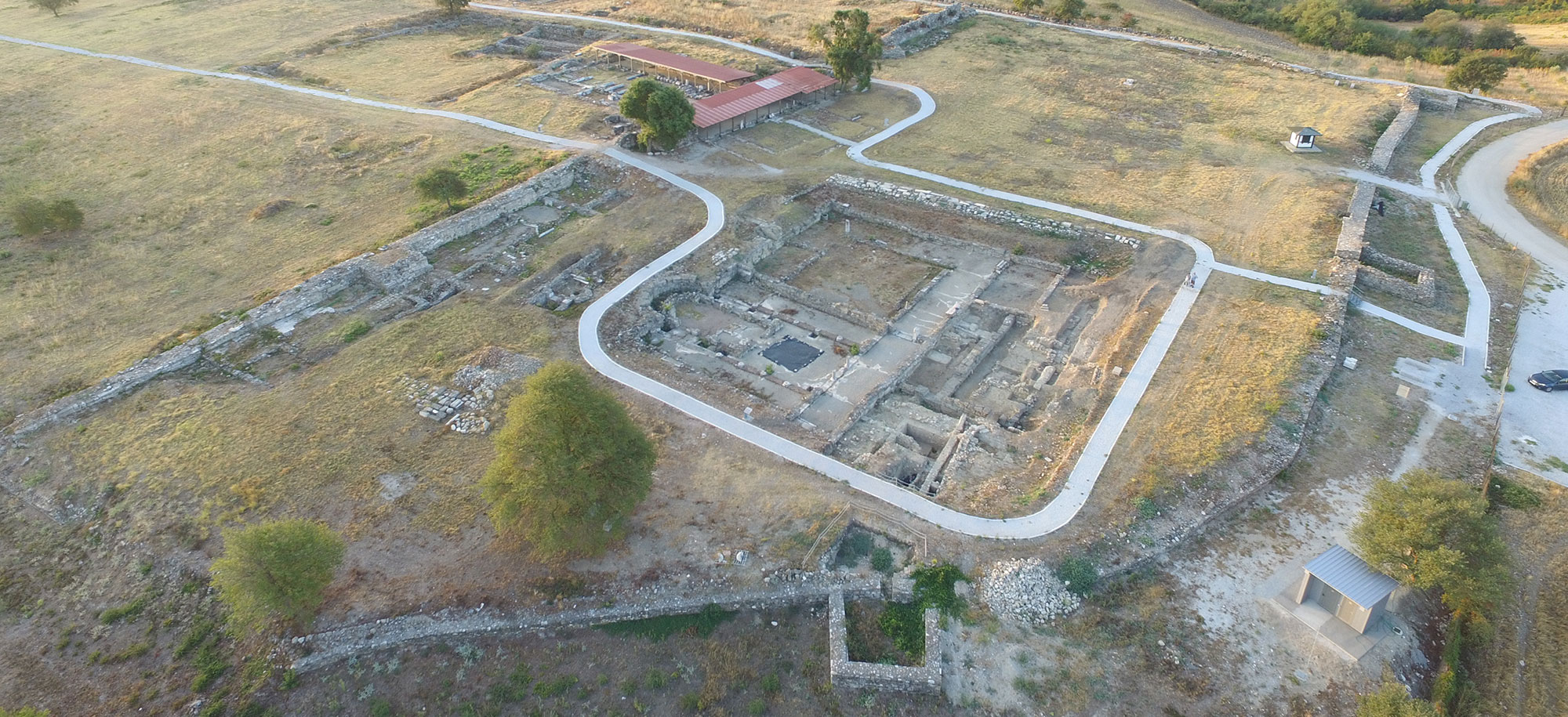 Cult Building Unearthed in Amphipolis
Cult Building Unearthed in Amphipolis
AMPHIPOLIS, GREECE—According to the Greek Reporter, a team of archaeologists from the University of Patras and the Ephorate of Antiquities at Serres uncovered an enigmatic cultic building at the site of Amphipolis in northern Greece. The city was founded by Athenian colonists in 437 b.c., later became part of the Kingdom of Macedon, and was inhabited through the Hellenistic, Roman, and early Byzantine periods. While excavating a Byzantine basilica, the Amphipolis Project team revealed sections of an older, partially preserved structure. They also found a wealth of material culture associated with the use of this structure as the center of worship of an unknown deity. “The excavation reveals a cult building, dated to the 4th century b.c., which we believe was dedicated to a female deity,” said University of Patras archaeologist Dimitris Damaskos. “This interpretation is drawn from movable artifacts that are suggesting rituals.” The archaeologists think that the temple may have been dedicated to Artemis Tauropolos, the hunting goddess, of whom a marble torso sculpture was recovered. Artemis was sometimes also celebrated as the protector of young girls during their transition to womanhood. Also found at the site was an abundance of oyster shells, which can also be associated with adolescent girls. The team also unearthed a child’s tooth, which may have also been deposited as an offering to the goddess, as well as clay figurines dated to between the fourth and second century b.c. To read about a massive fourth-century b.c. tomb found at Amphipolis, go to "Greece's Biggest Tomb," one of ARCHAEOLOGY's Top 10 Discoveries of 2014.
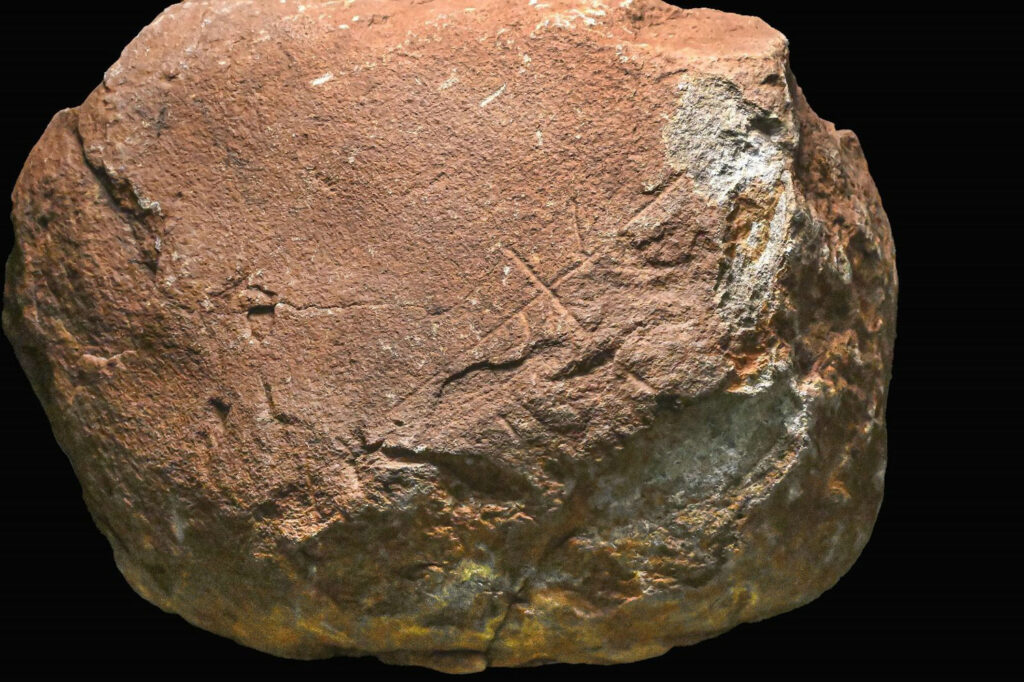
Sketches Found in Spanish Cave May Be 200,000 Years Old
MARBELLA, SPAIN—According to statement released by the Municipality of Marbella, the Department of Culture, Education, and Historical Heritage announced the discovery of a stone block that may rewrite human history in the Iberian Peninsula. The object was found at Coto Correa in Las Chapas, a site that has been known since the 1950s, when archaeologists first found stone tools there dating to the early Paleolithic period. Recently, a piece of gabbro, a type of igneous rock, was uncovered that seemed to contain mysterious engravings and designs made by humans. Preliminary dating suggested that the markings may have been created as long as 200,000 years ago. The find is particularly noteworthy because it could confirm the presence of early humans living in this area of Spain during the early Middle Paleolithic, a period about which experts still know little. Even more significantly, the incisions could also predate the oldest known cave art by 100,000 years. Researchers have begun in-depth analysis of the object, which is set to include detailed 3D scanning and more precise dating using quartz analysis of different sediment samples. To read about 25,000-year-old paintings and engravings found in a Valencia cave, go to "Paleo Palette."
 Wreck of Nineteenth-Century Ship Located in Great Lakes
Wreck of Nineteenth-Century Ship Located in Great Lakes
LAKE SUPERIOR, MICHIGAN—Western Reserve was once deemed one of the safest ships afloat and was nicknamed the “inland greyhound” for her speed along the Great Lakes, but the steamer disappeared beneath the waves of Lake Superior in 1892. Its final resting place was unknown for 132 years. According to a statement released by Great Lakes Shipwreck Museum, the wreck site has finally been located in 600 feet of water near Whitefish Point, Michigan. Western Reserve was one of the first all-steel vessels on the Great Lakes and was built to break cargo shipping records. On August 30, 1893, shipping magnate Captain Peter Minch took his family aboard the 300-foot ship for an ill-fated late summer cruise up Lake Huron to Two Harbors, Minnesota. They were soon caught by a summer squall that sank the vessel, killing 27 of the 28 souls on board. Recently, researchers from the Great Lakes Shipwreck Historical Society (GLSHS) located the Western Reserve wreck using side-scan sonar and an ROV. “Every shipwreck has its own story, but some are just that much more tragic,” said GLSHS executive director Bruce Lynn. “It is hard to imagine that Captain Minch would have foreseen any trouble when he invited his wife, two young children and sister-in-law with her daughter aboard the Western Reserve for a summer cruise up the lakes. It just reinforces how dangerous the Great Lakes can be––any time of year.” To read more about the wrecks of the Great Lakes, go to "Shipwreck Alley."
CURRENT ARCHAEOLOGY MAGAZINE
Click the cover image for more details
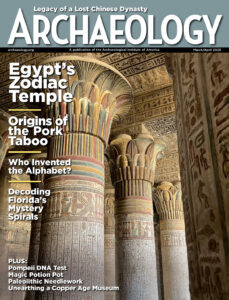
An Egyptian Temple Reborn
By removing centuries of soot, researchers have uncovered the stunning decoration of a sanctuary dedicated to the heavens
The Shell Seekers
How hunter-gatherers in northern Florida facing an uncertain future revived a powerful symbol of their past
Unearthing an Elusive Empire
Archaeologists have discovered rare evidence of an enlightened medieval dynasty that ruled much of Central Asia
The Secrets of Porvenir
Remembering the victims of a 1918 massacre that shook a Texas border community
Ahead of Their Time
Excavations reveal the surprising sophistication of Copper Age villagers in southwestern Iran 6,000 years ago


